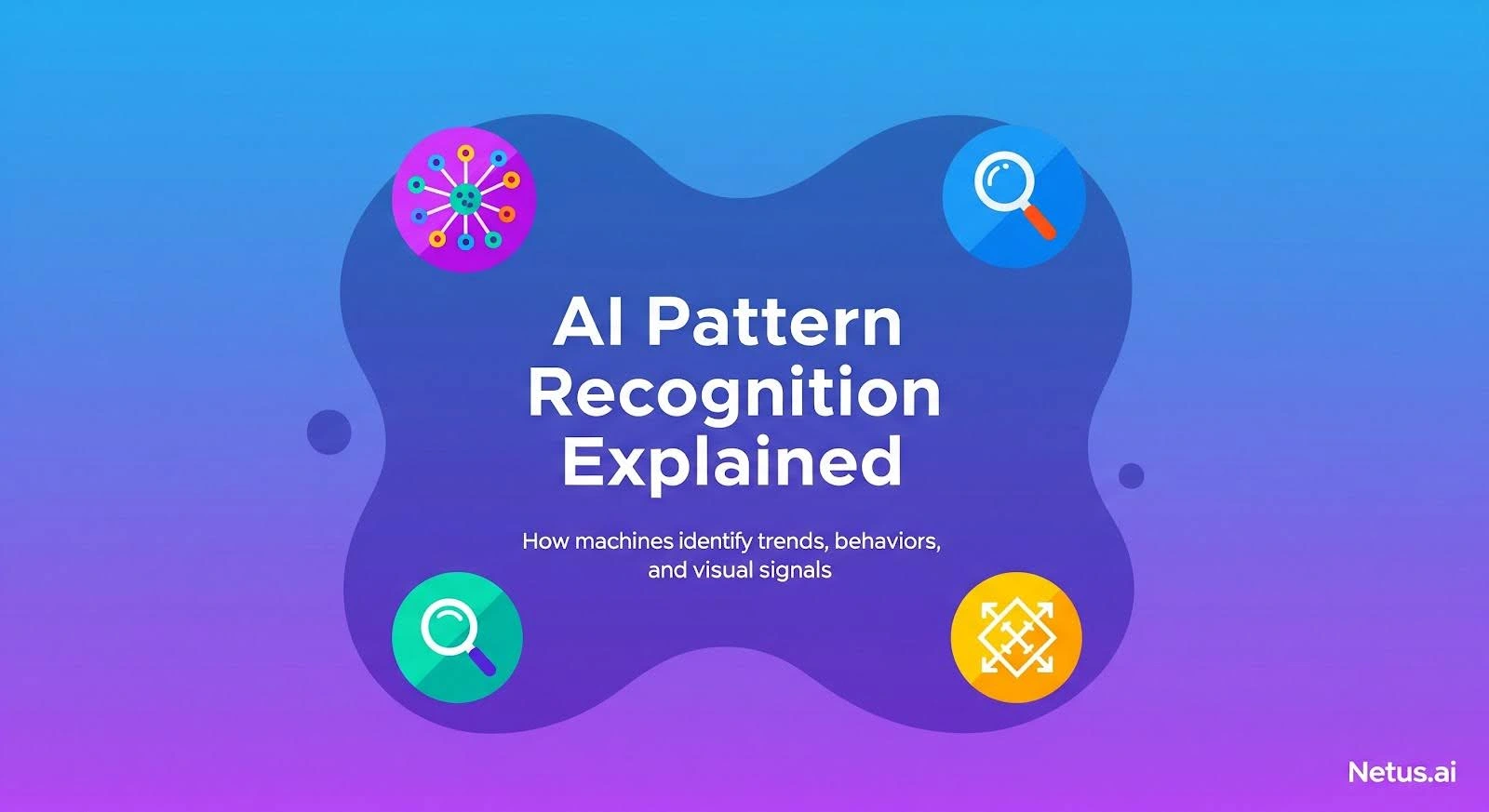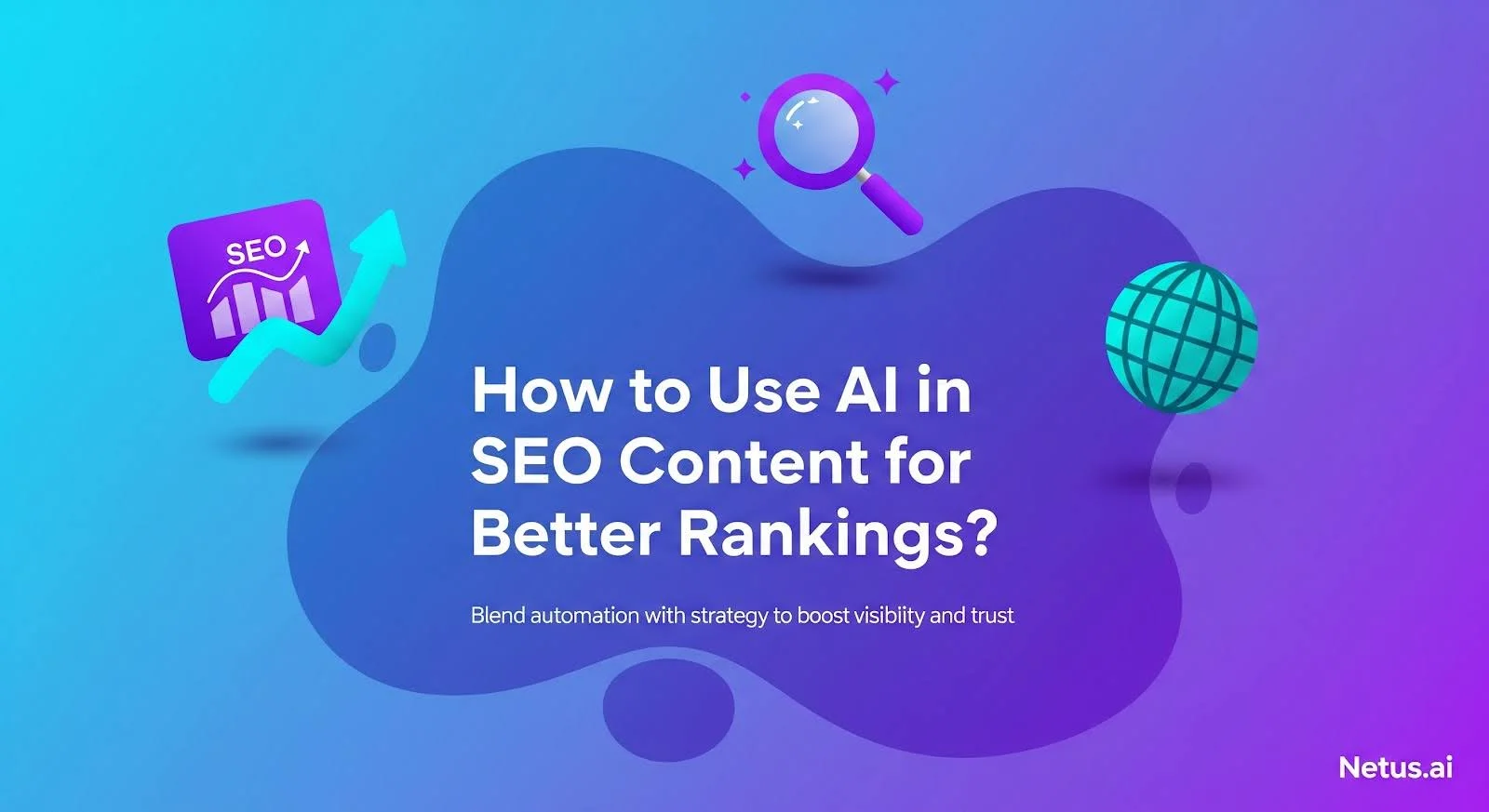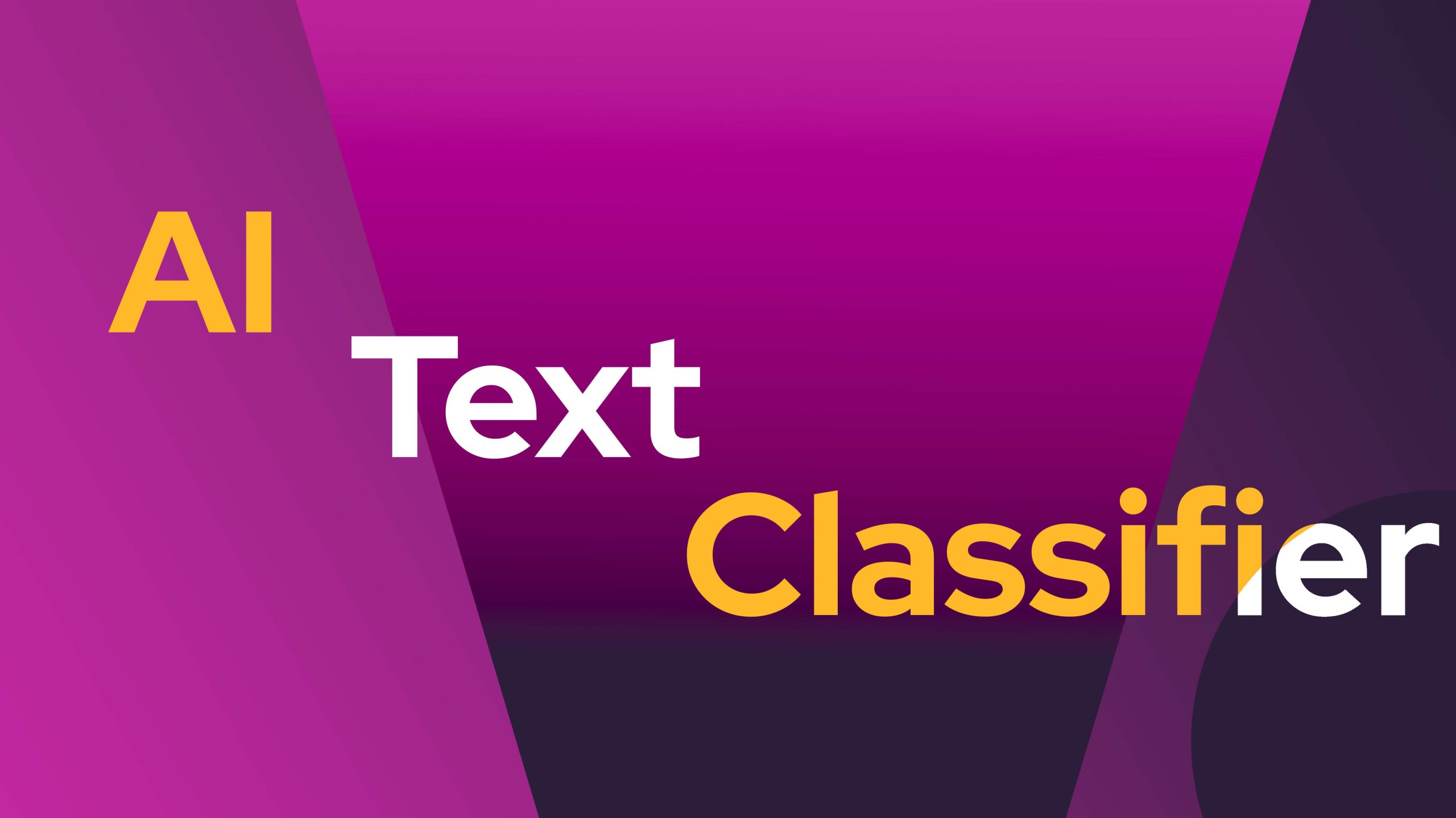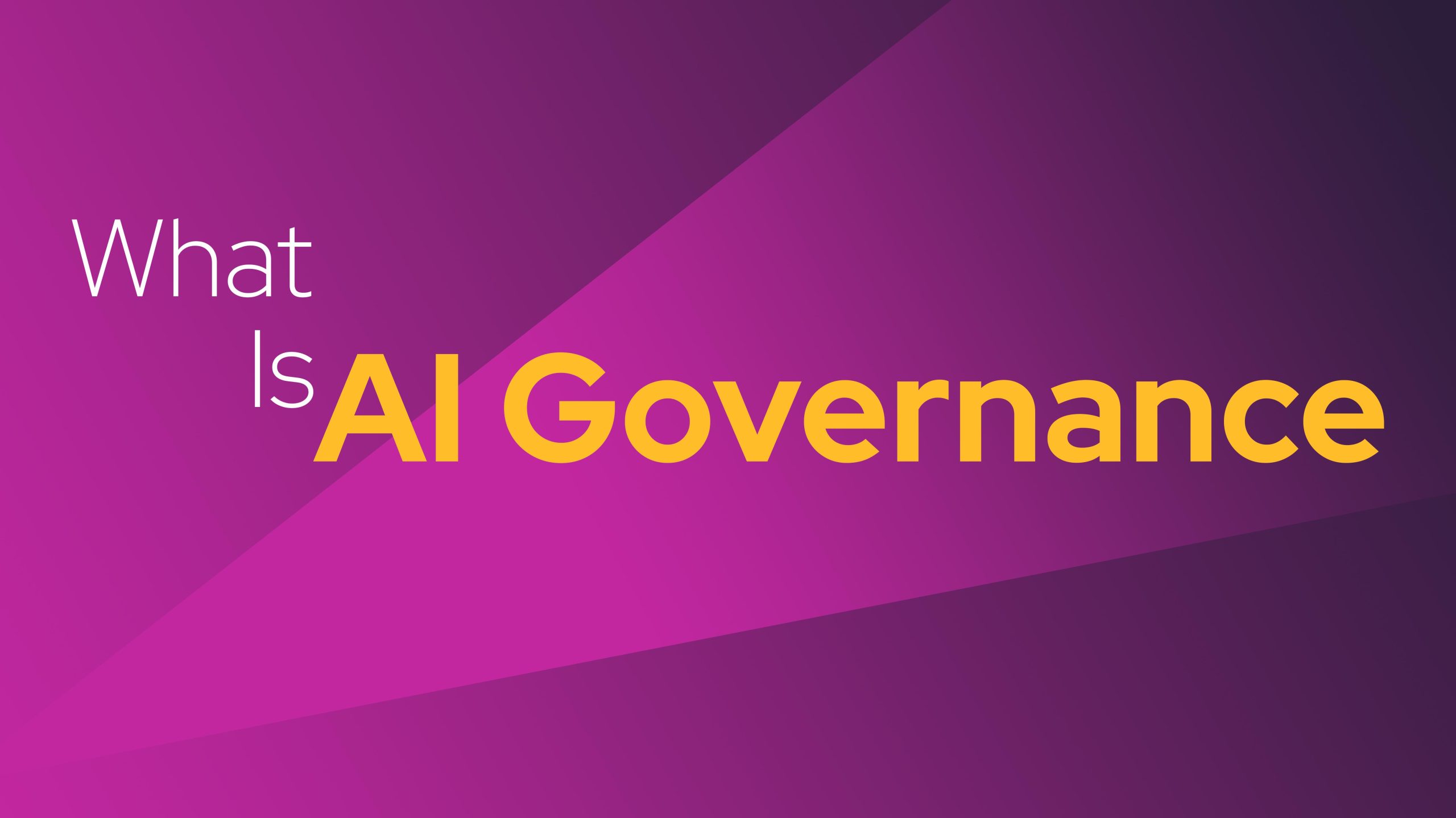Pattern recognition in AI really forms the backbone of what we see in artificial intelligence today. It allows machines to spot those patterns that keep showing up in data.
That kind of skill turns out to be essential across a bunch of different uses. For instance, it helps in picking up on plagiarism or even fraud attempts.
The process really breaks down into five main steps. Data collection starts with gathering raw information. Feature extraction comes next, where you identify relevant characteristics from the data.
Model training follows, teaching the AI system to recognize patterns. Pattern matching involves comparing new data against those learned patterns. Decision making wraps it up, drawing conclusions based on the matches.
This systematic approach turns raw data into meaningful insights.
Various models are employed for pattern recognition, including:
- Statistical models: Based on mathematical and statistical analysis.
- Neural networks: This setup pulls ideas from the way the human brain is structured and how it operates.
- Deep learning models: It relies on advanced neural networks that handle learning really complex patterns and representations.
These models get designed for particular uses in all sorts of fields. They focus on things like :
- Language: Where they handle understanding and processing what people say.
- Image: Which involves looking at and making sense of visual information.
- Behavior: Models spot and forecast how humans act.
In the real world, AI pattern recognition brings real advantages to different areas of work, such as:
- Education: By improving academic honesty.
- Publishing: The technology spots when content gets used without permission.
- Retail: Catch fake transactions early on.
- Legal: Makes sure rules and regulations are followed properly.
Using AI’s pattern recognition features can make a big difference in boosting efficiency, security and overall reliability across various sectors.
Machines depend on AI pattern recognition to process data effectively and pull out key insights in all kinds of industries.
Understanding pattern recognition
AI pattern recognition uses machine learning to identify regularities in data (text, images, audio, numerical), enabling intelligent decisions without explicit programming.
Pattern recognition process
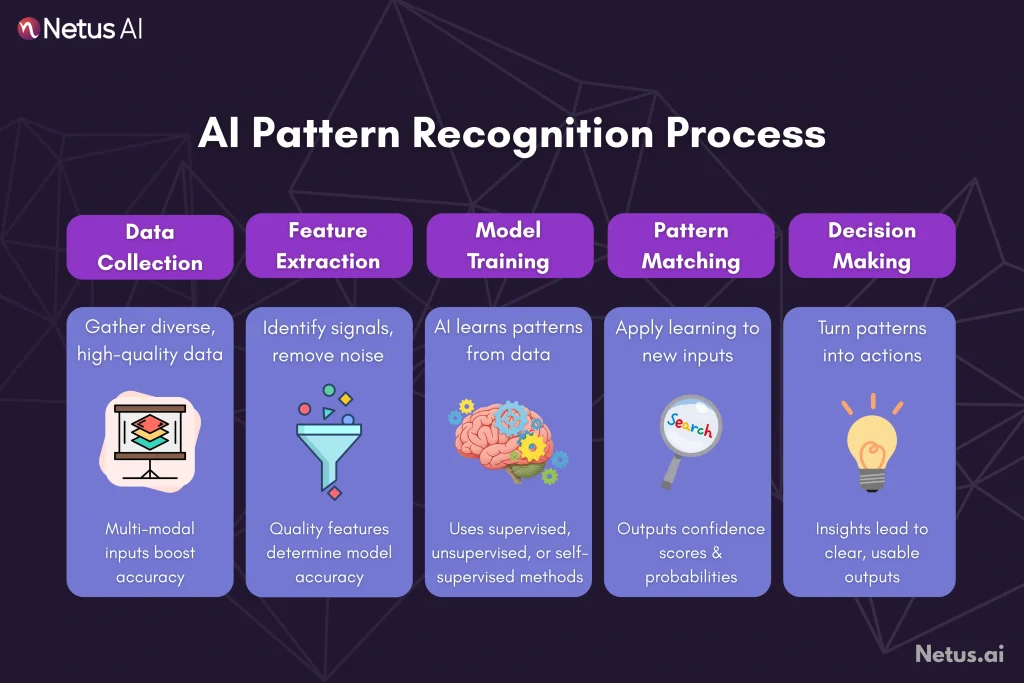
AI pattern recognition converts data to insights via a 5-step process.
Step 1: Collecting data
AI pattern recognition needs comprehensive, diverse, high-quality data (structured, unstructured, real-time). Multi-modal AI combines data types (e.g., text and metadata) for robust accuracy.
Step 2: Extracting features
The AI identifies relevant parts and transforms them into meaningful patterns. This process helps cut down on noise too. The quality of those features really affects how accurate the whole thing turns out.
Step 3: Training the model
AI learns pattern recognition through supervised methods, unsupervised ones or even self supervised approaches. It adjusts parameters using the data to achieve better generalization. Having diverse data in the mix improves the results quite a bit.
Step 4: Classification and pattern matching
It applies what it learned to new data sets. This involves evaluating confidence levels, dealing with any ambiguity and giving out probability scores.
Step 5: Making decisions
This turns everything into actionable insights by interpreting classifications and applying rules. It also generates responses as needed.
Categories of pattern recognition models
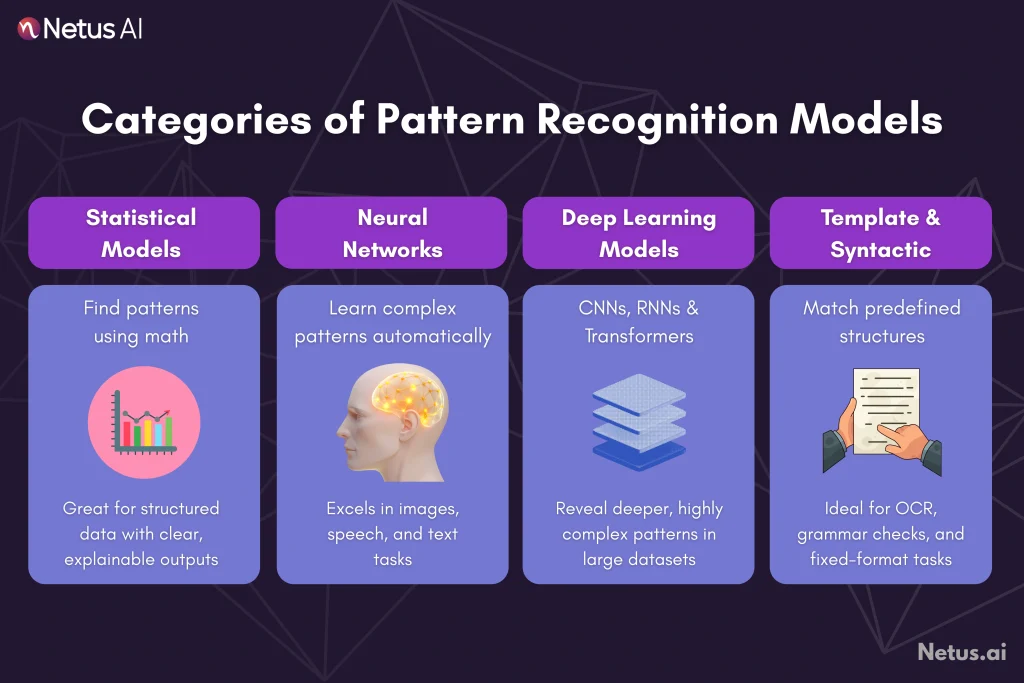
Different pattern recognition models each bring their own advantages to certain kinds of tasks and data sets.
Statistical models
Statistical models work well with numbers. They spot patterns through math tools like probability and how things connect. These models handle organized data pretty effectively. They give results you can understand easily, along with solid
Neural networks
Neural networks really shine when it comes to picking out tricky patterns in things like pictures, spoken words or written text. They build up layers of understanding on their own. Often they do better than older statistical approaches in those areas.
Deep learning (CNNs, RNNs, Transformers)
Deeper versions of neural networks push pattern recognition even further. Models such as CNNs, RNNs and Transformers stand out in deep learning. They help reveal complicated patterns that power AI systems.
Template matching & syntactic recognition
Template matching and syntactic methods focus on set structures. They handle predefined jobs accurately, for instance in reading printed text or checking grammar rules.
Practical applications of AI pattern recognition
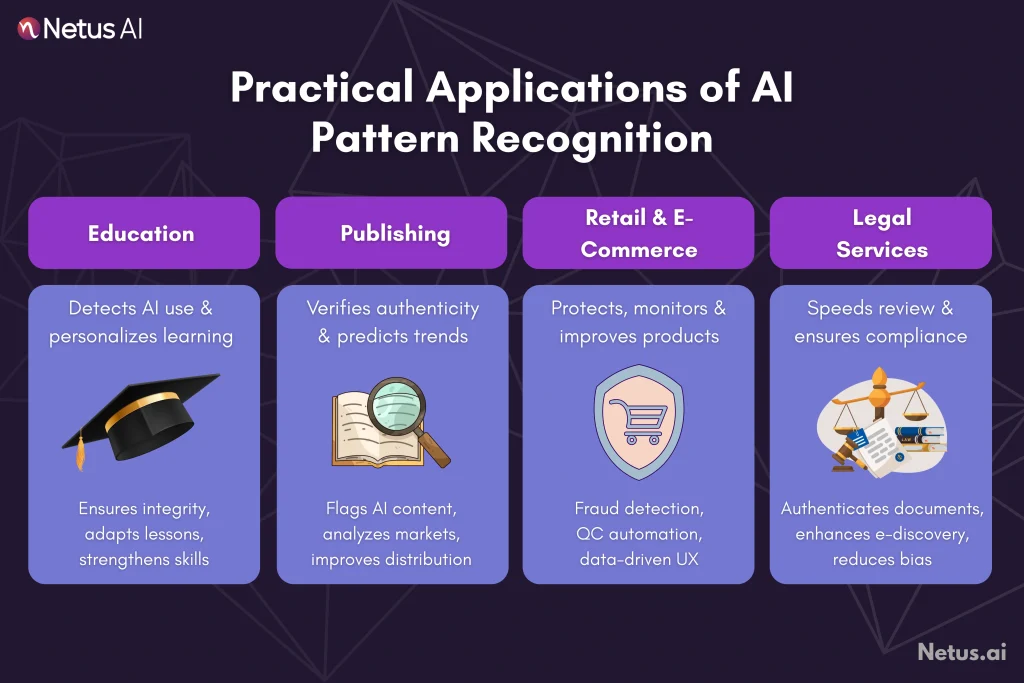
Education
Academic integrity
AI pattern recognition identifies AI-generated work and plagiarism by analyzing writing styles and content structures. This helps educators maintain academic integrity.
Adaptive learning
AI in education uses pattern recognition to analyze student data, identify gaps and personalize content, improving learning outcomes by adapting to individual needs and pace.
Skill development
Pattern recognition training enhances problem-solving and AI literacy, fostering analytical thinking crucial for tech careers.
Publishers
Content authenticity
Publishers use pattern recognition to detect AI-generated or plagiarized content, maintaining standards and credibility.
Market insights
Publishers analyze reviews, sales and market trends to identify emerging topics, guide editorial strategies and target content and marketing.
Distribution optimization
Pattern recognition optimizes forecasting, inventory and marketing, reducing costs and boosting satisfaction and engagement.
Retail & E-commerce companies
Fraud detection
AI detects suspicious patterns to prevent cyber threats and fraud, saving money and maintaining trust.
Quality control
Pattern recognition enables automated, scalable monitoring for product defects, system anomalies and customer feedback, ensuring consistent quality and rapid issue resolution impossible manually.
Product development
Data analysis of user behavior, purchases and feedback drives product and UX improvements, resulting in products that better meet customer needs.
Legal services
Document authenticity
Legal professionals use pattern recognition to verify legal documents and ensure compliance.
E-discovery & due diligence
AI pattern recognition speeds up legal discovery by accurately identifying relevant info and risks in large document volumes.
Bias & privacy mitigation
AI detection promotes transparency, helping legal pros avoid bias and protect client data, which is key for ethical AI use in law.
How does NetusAI help?
NetusAI employs cutting-edge AI pattern recognition to deliver powerful solutions across diverse sectors, with a particular focus on education and other aspects as well.
Through the application of highly advanced models and sophisticated algorithms, NetusAI plays a crucial role in identifying content generated by artificial intelligence and detecting instances of plagiarism.
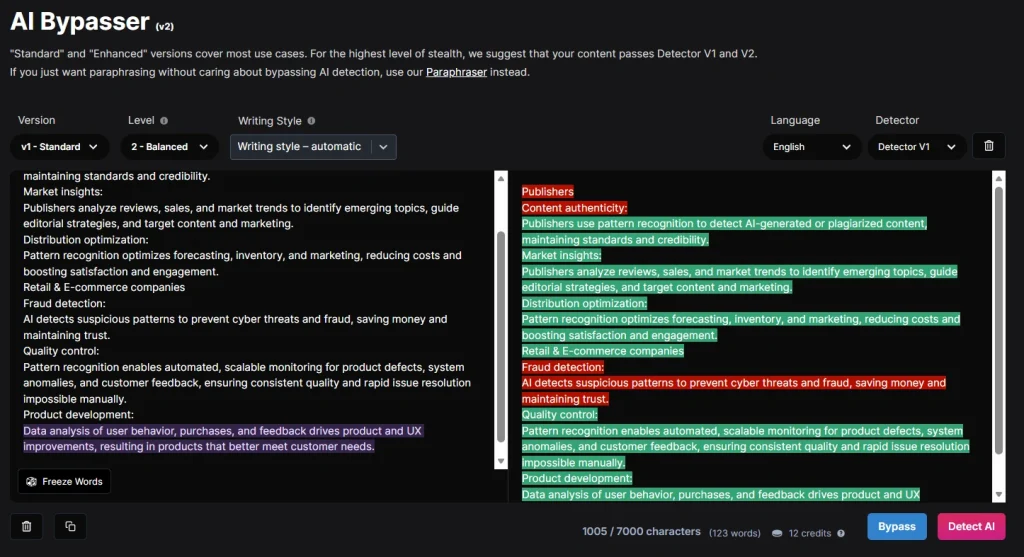
This is where smart creators now work with a feedback system.With tools like Netus bypasser, you can:
- Scan your content in real-time
- See which parts are triggering red flags
- Rewrite just those blocks using AI bypass engines
- Rescan until you hit “Human”
Instead of guessing, you’re testing and avoiding the pain of false positives entirely.
This commitment to authenticity ensures that both educational and other content in written form remain trustworthy and credible.
Final thoughts
AI pattern recognition keeps developing as this powerful technology. It looks at tough data and makes sense of it in new ways. It spots plagiarism and fraud making a big difference. It streamlines operations and checks for compliance. In the end, it pushes better decisions and fresh ideas.
NetusAI relies on cutting-edge models for this kind of recognition. It draws on smart algorithms too. They pick out content made by AI and catch plagiarism. That supports real academic honesty. It protects ideas that people own.
Overall, it builds a trustworthy space for real learning and research.
FAQs
Pattern recognition in AI stands as a main part of artificial intelligence overall. It helps machines spot those repeating trends and regular patterns on their own. They pull this off in all kinds of data sources too. Think text files, images, audio clips and even numbers laid out in sets.
The process consists of five key steps that handle the main parts. These steps cover data collection, feature extraction, model training, pattern matching or classification and decision-making.
People rely on a range of models for these purposes. That covers statistical approaches, neural networks and more sophisticated deep learning options such as CNNs, RNNs and Transformers. They turn to template matching along with syntactic recognition for certain targeted applications.
Basic paraphrasers swap words. Netus’s advanced engine humanizes AI content, bypassing detection by restructuring sentences, varying rhythm and breaking AI patterns.
Absolutely. That’s exactly what tools like Netus are built for. You paste your draft, get instant AI/human verdicts and edit with rewriting engines, all without leaving the page.

